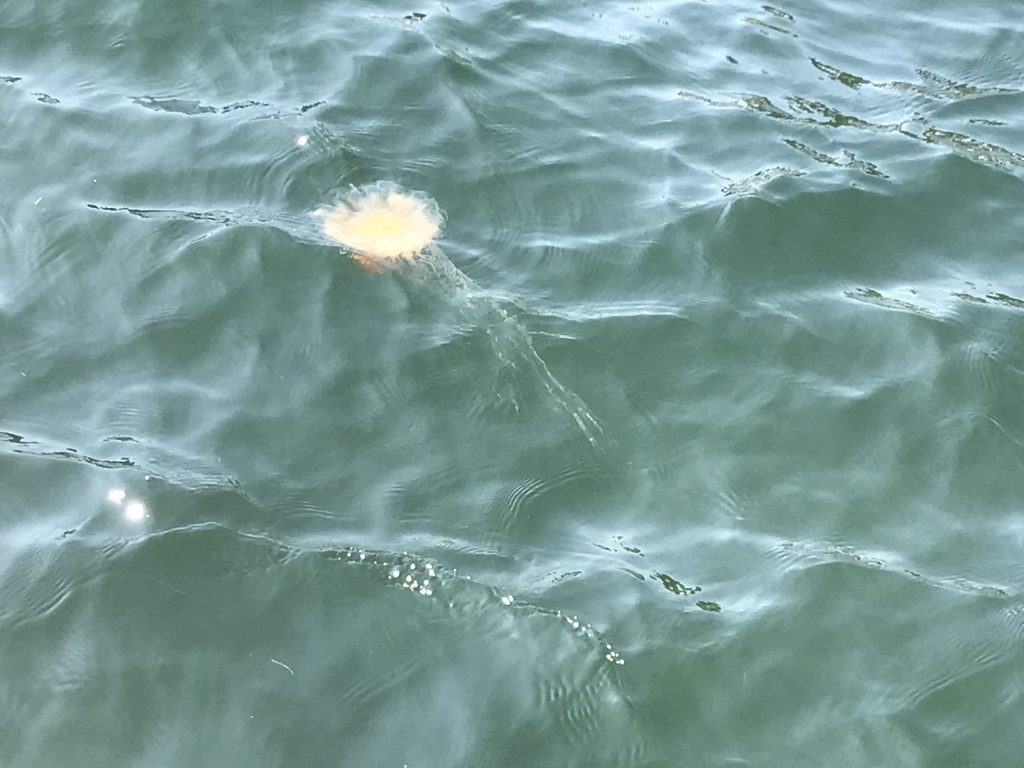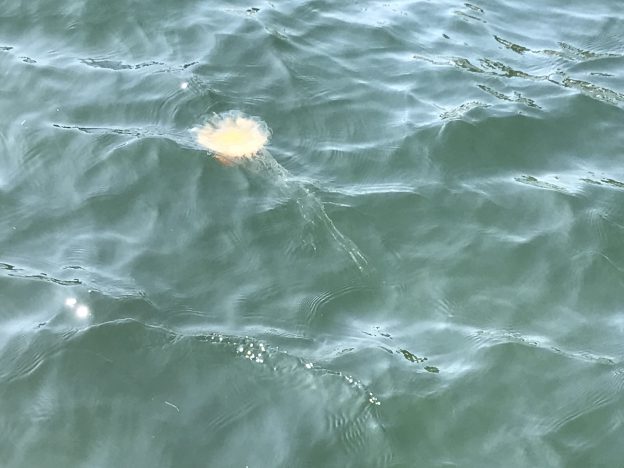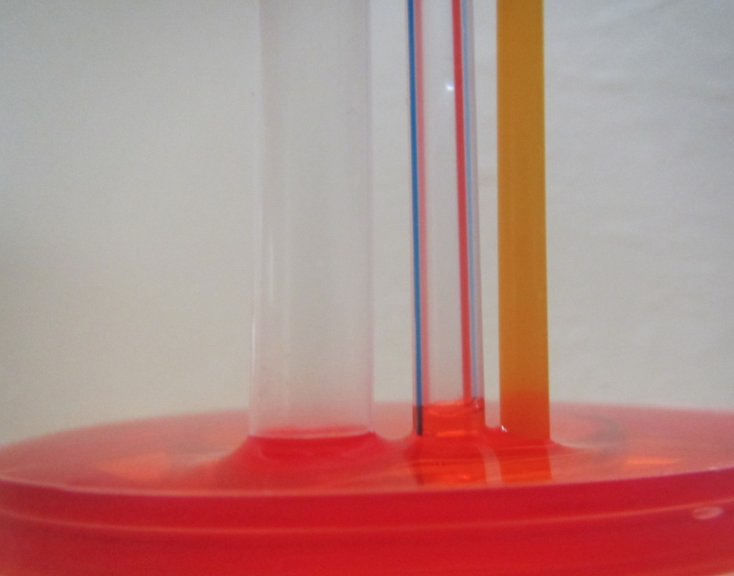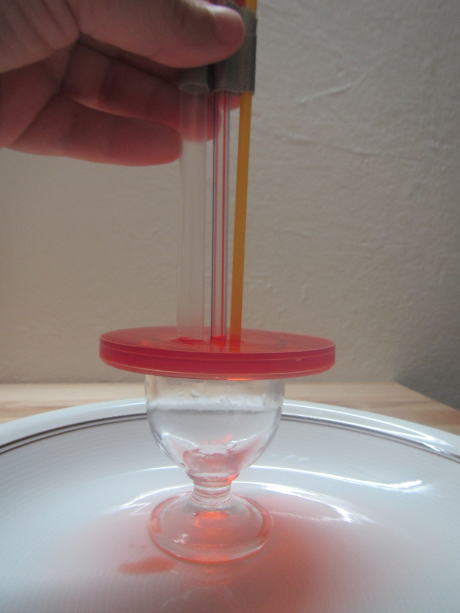The other day, my friend and co-author Pierré sent me pictures he took during fieldwork in a Norwegian fjord. As I, sadly, wasn’t there, all I can do now is admire the pictures and wish I had been there. And, of course, do a #friendlywaves — an interpretation of a wave field that a friend sent me a picture of. Let’s see what he thinks about my interpretation!
So here we go. As you see, it’s a foggy day, and from the time he messaged me at, I know it was a foggy morning. The light seems to kinda be coming from a low angle which would support the morning (or evening) theory, but that’s always very hard to tell in the fog.
There are some waves on the sea surface, and below you see two distinct wave fields at a small angle to each other. What caused them?
I am guessing that the ones that look like sections of a circle are from some kind of point source, which would be located somewhere below and to the right of the picture’s lower right edge. Maybe something regularly dripping into the water, or a buoy being deployed. I think I’ve seen something like that when a CTD was coming up again and the wire was dripping as it went over a pulley. In any case, I am pretty sure the ship was on station as the picture was taken.
The second wave field, more or less parallel to the lower edge of the picture below, I would guess is the background field. Could be caused by anything, but nothing very close by: It’s not locally generated wind waves. If I had to guess it’s wind waves that have run for a little while. It might also be the ship gently rocking, radiating straight-ish wave fronts, but I doubt it.
As to what we can say about the spot the picture was taken in: There are no structures/shore lines really close by (otherwise we’d see reflections in the wave field), and the water depth is more than a meter or so — it’s definitely long compared to the wave length of the waves shown here as they can’t “feel” the ground (which we see from their shape — not shallow water waves).
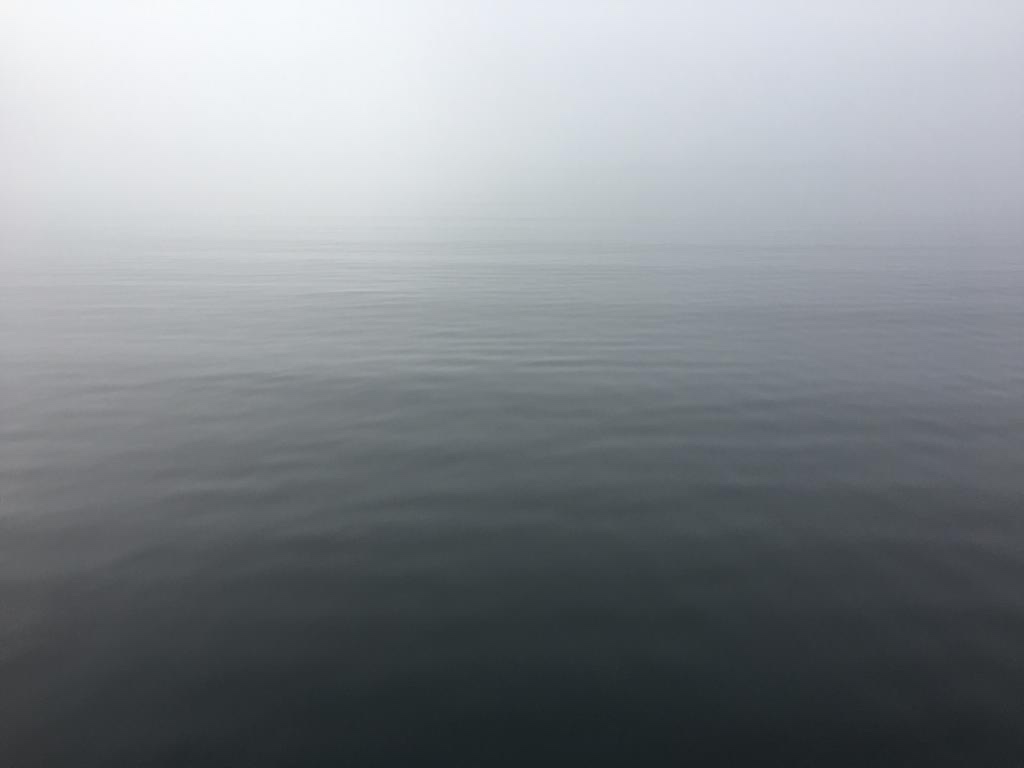
Picture by Pierré de Wet, used with permission
The next picture, I am assuming, was sent to me to capture the mood. And to make me jealous. Yes, it worked ;-)
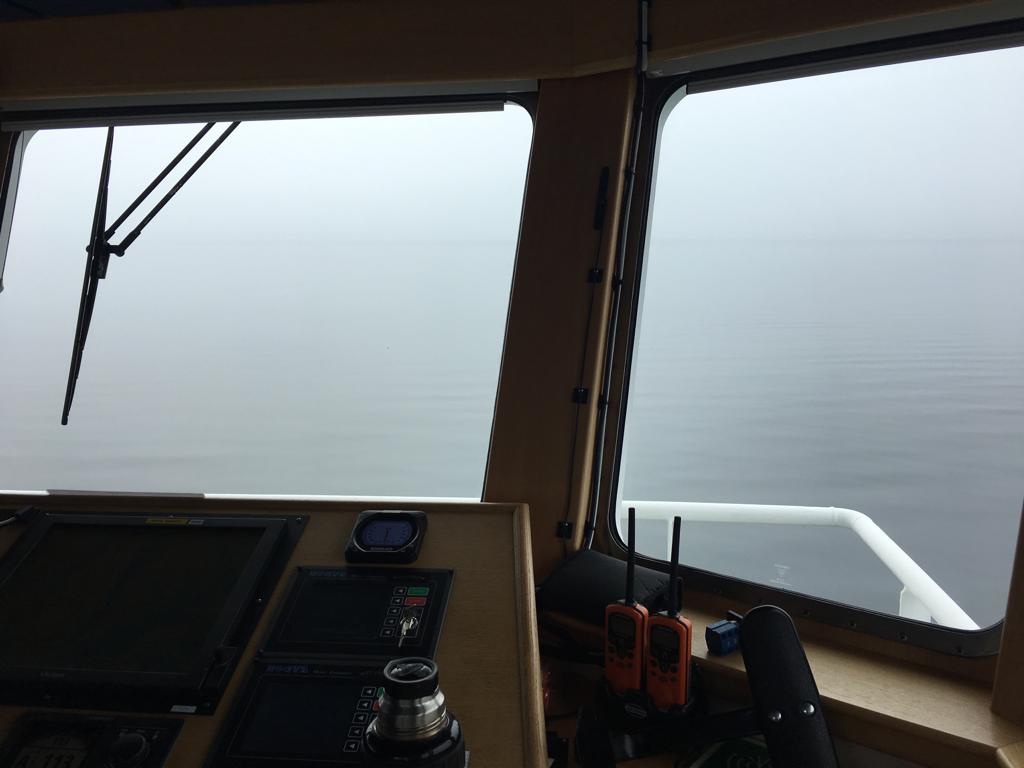
Picture by Pierré de Wet, used with permission
Below, we see that the ship is now moving. We are looking down and back and see the wake developing: The turbulent wake in the top left of the picture, one side of the feathery V-shaped wake on the right of the turbulent wake. The feathery waves are fairly steep, but that’s because of how they were generated, not because of any interference with the ground. The ground is still more than at least two or so wavelengths away (and it better had be, judging from the size of the ship).
There was hardly any wind when this picture was taken, the sea surface doesn’t show any locally created wind ripples.
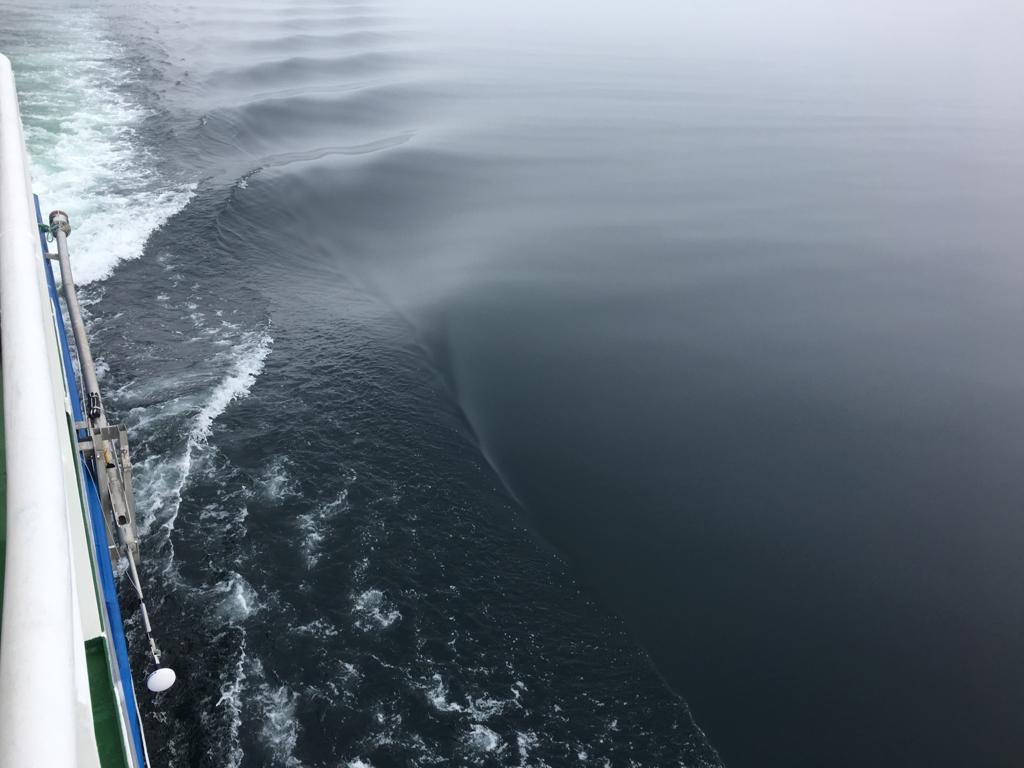
Picture by Pierré de Wet, used with permission
I think it’s so fascinating to see the sharp line in the lower middle of the picture, separating the part of the sea surface that has been influenced by the ship from the one that hasn’t received any signal of the ship’s presence yet. If you think about the V-shaped wake as of the ship’s Mach cone, the outside of the V is where people would first hear the sonic boom after the ship has flown past!
The picture below is looking at a similar situation wake-wise. Now, though, there is a little wind: You can clearly see the enhanced surface roughness, and indeed individual capillary waves, in the bottom right corner.
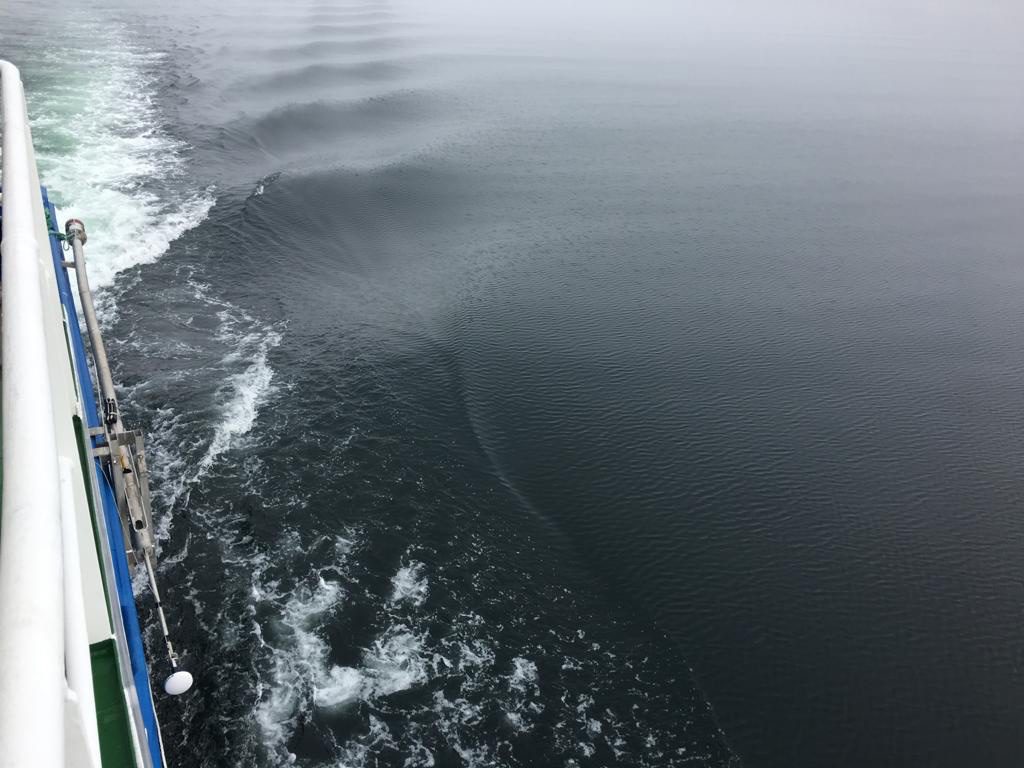
Below is a third picture of the same situation. Now there are some small waves in the surface, however not locally produced, I think. Maybe they already sailed out of the spot (can you say breezy? It’s really not a windy spot) shown above?

Picture by Pierré de Wet, used with permission
What I find fascinating above is how clearly you see the one leg of the V-shaped feathery wake develop, and even in the foreground of the picture how you can see individual turbulence cells from where the bow wave broke as the ship sailed through the water.
What else do you observe? It’s not so easy to look at other people’s wave pictures and make sense of them! How did I do, Pierre?
